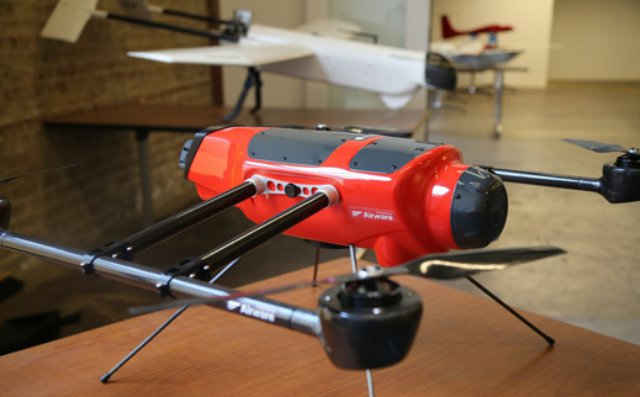A startup called Airware is working with NASA on a project exploring how to manage the swarms of commercial drones expected to start appearing in U.S. skies. The four-year programme will create a series of prototype air traffic management systems and could shape how widely commercial drones can be used. Airware’s main business is selling control software and hardware to drone manufacturers and operators.
The U.S. Federal Aviation Administration has yet to propose rules to govern the use of commercial robotic aircraft in U.S. skies. But it predicts that 7,500 unmanned craft weighing 55 pounds (25 kilograms) or less will be operating in the U.S. by 2018. There is strong interest from agriculture, mining, and infrastructure companies in using drones for tasks like inspecting crops or gathering geospatial data.
That could mean gridlock in the skies, or at least increasingly unsafe traffic patterns. “You will have competing interests trying to use the same space,” says Jesse Kallman, head of business development and regulatory affairs at Airware. “Imagine Amazon trying to deliver packages in an area that an energy company is trying to survey their power lines.”
The first prototype to be developed under NASA’s project will be an Internet-based system. Drone operators will file flight plans for approval. The system will use what it knows about other drone flights, weather forecasts, and physical obstacles such as radio masts to give the go-ahead.
Later phases of the project will build more sophisticated systems that can actively manage drone traffic by sending out commands to drones in flight. That could mean directing them to spread out when craft from multiple operators are flying in the same area, or taking action when something goes wrong, such as a drone losing contact with its operator, says Jonathan Downey, CEO of Airware.
If a drone strayed out of its approved area, for example, the system might automatically send a command that made it return to its assigned area, or land immediately. The commands could vary depending on the situation—such as how close the drone is to a populated area—or the size and weight of the aircraft, says Downey. Ultimately, NASA wants its system to do things like automatically steer drones out of the way of a crewed helicopter that unexpectedly passes through.
Getting that to work will require a reliable way for drones to communicate with the traffic system. Airware believes that equipping drones with cellular data connections could be the best option. The equipment that conventional aircraft use to communicate or send digital data to air traffic control systems is too bulky for use on drones.
Airware is set to perform a series of flight and lab tests on different drone craft, ranging from quadcopters to helicopters to fixed wing planes, on a NASA base in California, perhaps as soon as this year. The first stage of testing is aimed at understanding how different craft could respond to commands from a traffic control system.
Ella Atkins, an associate professor of aerospace engineering at the University of Michigan, says that so-called general aviation—unscheduled private flights—pose the most difficulty to integrating drone traffic into U.S. airspace. “The most challenging thing would be to combine a large fleet of Amazon Prime drones carrying packages and the Piper Clubs that just want to punch a hole in the sky on the weekend,” she says.
Atkins says that is as much a regulatory issue as a technological one, and suggests it may be time to reconsider FAA rules written for when only crewed craft took to the skies. Giving drones relatively free reign below an altitude of a few hundred feet, except in the vicinity of airports, would mostly remove conflict between drones and general aviation, she suggests.
Such major changes to FAA rules appear unlikely. People in the nascent commercial drone industry often point out that the U.S. regulator has been slower than its counterparts in other countries to clear the way for commercial drone flights, even just for research. Airware already has customers using its control systems on drones flying over mining operations in France, and inspecting oil rigs in Australia, for example.
However, those countries have not so far begun work on drone traffic control systems. “I’m not familiar with any other system,” says Downey. “This is an area the U.S. has an opportunity to take the lead on.”
Source: MIT Technology Review

